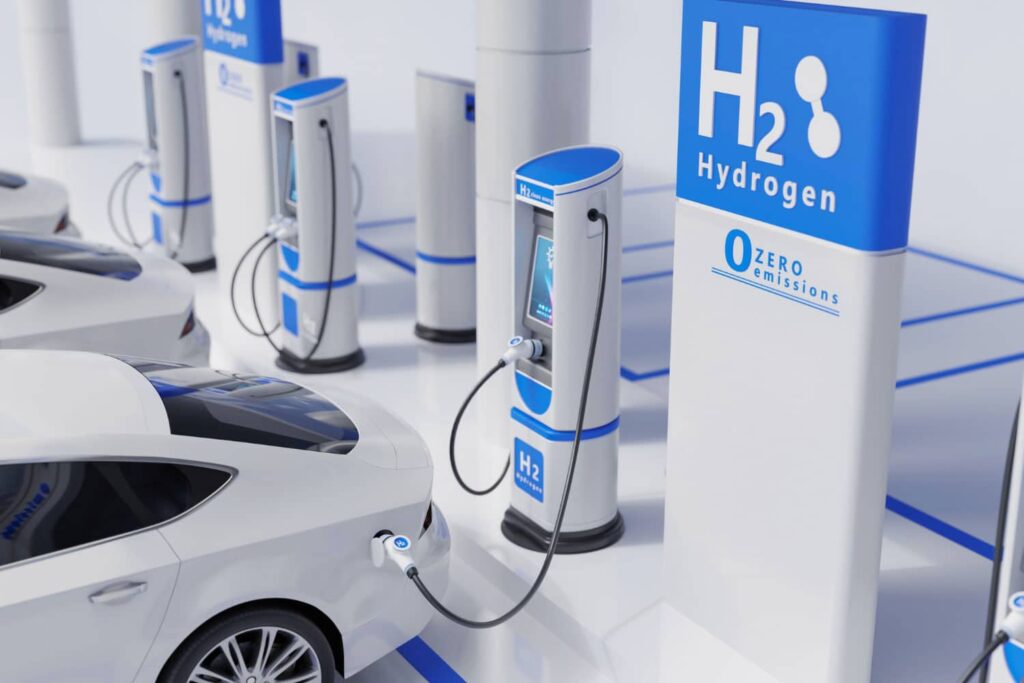The adoption of hydrogen-powered vehicles as an alternative to conventional cars is on the rise, posing new challenges in ensuring safety, particularly in tunnel environments. Graz University of Technology (TU Graz) has conducted a comprehensive examination of potential incidents involving hydrogen-powered vehicles in tunnels, identifying associated risks for individuals and tunnel infrastructure.
The HyTRA project, funded by the Austrian Research Promotion Agency (FFG), the Federal Ministry for Climate Protection, Environment, Energy, Mobility, Innovation and Technology (BMK) and ASFINAG, aims to develop measures to mitigate these risks.
There is currently limited empirical data on real accidents involving hydrogen-powered vehicles in tunnels due to their low traffic share. As a result, estimating the probability of occurrence is challenging. Experience with gas-powered vehicles suggests a low probability, but the potential extent of damage has been analyzed extensively. Experiments from the EU HyTunnel-CS project, which concluded in 2022, have provided valuable insights.
Hydrogen-powered vehicles, with their high energy density and storage pressure, pose a significant threat. The standard storage pressure for hydrogen in cars is 700 bar, and 350 bar for lorries and buses. If a tank is damaged, a substantial amount of energy is rapidly released. In the event of a fire, hydrogen burns at temperatures exceeding 2000 degrees Celsius, highlighting the potential for severe damage and danger.
Although the tanks are robust and well protected against mechanical impact, they may not withstand a rear-end collision with a lorry, making it crucial to minimize this scenario as much as possible.
In the event of an FCEV accident, the likelihood of significant impact from hydrogen is low. However, serious accidents can trigger three different hazard scenarios.
The first scenario involves the controlled release of hydrogen from the tank through a thermal pressure relief device (TPRD), which helps maintain pressure levels and prevents the tank from rupturing. If ignited, the flame is directed toward the ground, limiting the danger zone.
In the event of TPRD failure, a tank explosion can occur, posing risks of death and serious injuries nearby. The least likely scenario involves the release of unignited hydrogen, which can lead to a hydrogen cloud explosion if ignited, causing a blast wave.
“Our investigations have shown that although the hazard scenarios involving hydrogen vehicles are relatively unlikely, they harbor great potential for damage. Modern hydrogen tanks are built so safely that a lot has to go wrong for the hydrogen to escape,” says Daniel Fruhwirt from the Institute of Thermodynamics and Sustainable Propulsion Systems at TU Graz. “In addition, the transport infrastructure in Austrian tunnels probably fulfills the strictest requirements in Europe. The safety level is also very homogeneous since we only have one operator for all motorway and highway tunnels. In terms of infrastructure, there is hardly any risk of damage to the tunnel structure, but accidents would be dangerous for people.”
Recognizing the potential risks, Daniel Fruhwirt and his project team have put forth a series of measures to mitigate these dangers. These include the implementation of stricter speed limits, monitored with section control, to ensure vehicles are traveling at safe speeds. Additionally, precise distance controls will be used to alert drivers when they are following too closely, reducing the risk of rear-end collisions. Finally, displaying speed limits earlier in traffic jams will help to reduce the severity of any potential accidents.
“What has already been implemented in most EU member states as a result of the serious events at the end of the 1990s and early 2000s is that all tunnels on motorways and highways with a length of more than 500 meters are twin-tube tunnels and are generally no longer used for bi-directional traffic. This reduces the risk considerably,” explains Daniel Fruhwirt.
Journal reference:
Martin Aggarwal et al. Hydrogen Powered Vehicles in a Tunnel Incident – Risks and Consequences. DOI: 10.3217/978-3-85125-996-4-45
>>> Read full article>>>
Copyright for syndicated content belongs to the linked Source : Tech Explorist – https://www.techexplorist.com/risk-damage-potential-hydrogen-vehicles-tunnels/84905/#utm_source=rss&utm_medium=rss&utm_campaign=risk-damage-potential-hydrogen-vehicles-tunnels
